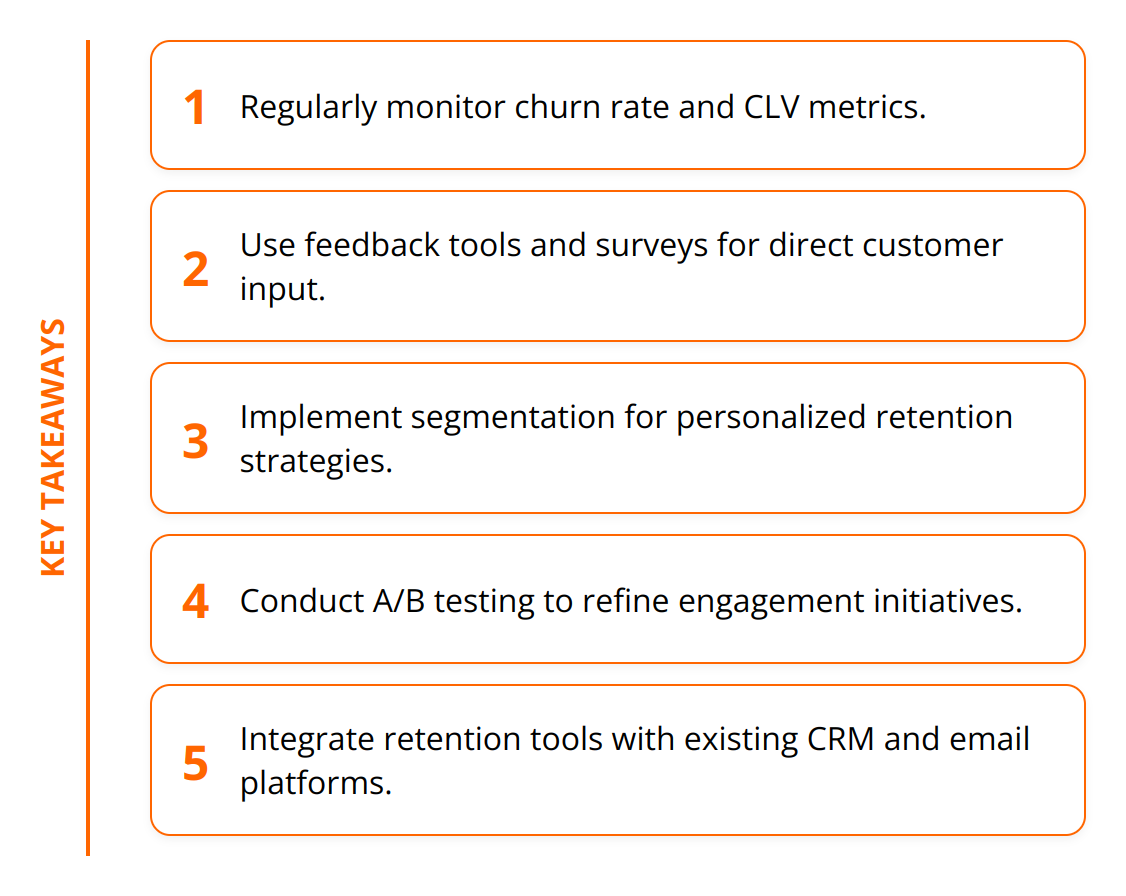
We at Reward the World understand that keeping customers engaged and loyal is more than just a strategy; it’s essential for business survival and growth. Finding the right analysis tools is pivotal for dissecting and understanding customer behaviors and patterns. This guide: How to Choose Customer Retention Analysis Tools, aims to help you navigate the complex terrain of customer retention analysis tools. It covers the why, what, and how, ensuring you make an informed decision that matches your specific business needs.
Why Analyze Customer Retention?
Understanding customer retention starts by recognizing its definition and why it matters. Customer retention refers to a company’s ability to keep its customers over time. It’s an indicator of how well a business builds relationships with its customer base and maintains continued value to encourage repeat purchases or subscriptions. The significance of focusing on retention cannot be overstated; it’s often more cost-effective to retain existing customers than to acquire new ones. A well-known statistic from Bain & Company supports this, indicating that increasing customer retention rates by 5% increases profits by 25% to 95%.
Key metrics for monitoring customer retention include churn rate, repeat purchase ratio, customer lifetime value (CLV), and Net Promoter Score (NPS). Churn rate reveals the percentage of customers who have stopped using your service or product within a certain timeframe. The repeat purchase ratio measures how often customers make additional purchases. CLV estimates the total revenue a business can expect from a single customer account, and NPS indicates overall customer satisfaction and likelihood of recommending your business to others.
Analysis plays a pivotal role in predicting and improving retention rates. By delving into customer behavior, purchase history, and feedback, businesses can identify why customers may leave and what keeps them coming back. This insight enables targeted strategies to improve satisfaction and loyalty. For instance, identifying commonalities among customers who churn might reveal issues with a specific product feature or customer service touchpoint. Addressing these issues can directly improve retention. Conversely, understanding why loyal customers stay can help replicate successful strategies across your customer base.
Practical steps for effective customer retention analysis include:
- Regularly monitor key metrics like churn rate and CLV to establish benchmarks and track performance over time.
- Use customer feedback tools and surveys to gather direct input from your customers about their experience and satisfaction.
- Implement segmentation to analyze different customer groups distinctly, allowing for more personalized retention strategies.
- Conduct A/B testing on engagement initiatives to refine approaches that work best for different segments of your audience.

For detailed strategies on retaining and rewarding customers, exploring our posts on customer retention tactics and increasing CLV with reward programs can offer valuable insights.
In summary, customer retention analysis is not an optional part of doing business; it’s essential. By understanding and acting on customer behaviors and feedback, businesses can significantly enhance loyalty, reduce churn, and ultimately, drive growth.
Essential Features in Retention Tools
Selecting the right customer retention analysis tools is crucial for turning data into actionable strategies that foster customer loyalty and reduce churn. The myriad options available can be overwhelming, but focusing on specific features will help narrow down the search. Here’s what to prioritize as you choose your next retention analysis tool.
Seamless Integration is Key
The ability to integrate seamlessly with your existing systems is non-negotiable. The best tools should connect effortlessly with your CRM, email marketing platform, customer support software, and any other tool you use to interact with or track customer behaviors. Seamless integration not only saves time but also ensures data consistency across platforms, providing a holistic view of the customer journey. For instance, integrating a tool like HubSpot offers targeted marketing campaigns and customer feedback surveys all in one place, streamlining your retention efforts.
Demand Real-Time Data and Analytics
In the fast-paced digital world, real-time data processing and analytics are invaluable. Tools that provide instant insights into customer behavior allow for timely interventions that can prevent churn. Real-time analytics help in identifying at-risk customers so that you can react promptly with targeted retention strategies. This agility in response can significantly enhance customer satisfaction and loyalty. For examples of how real-time analytics can boost your strategy, exploring our article on in-depth analytics in rewards programs could provide further insights.

User-Friendly Dashboards and Reports
Finally, ensure the tool offers user-friendly dashboards and reporting options. Data is only as good as your ability to understand and act upon it. Dashboards that are intuitive and customizable allow you to monitor the metrics most relevant to your business easily. Reporting features should enable you to generate insights without needing a data science degree. Tools that offer clear, action-oriented reports can dramatically improve your team’s efficiency and make it easier to share insights across departments.
When it comes to choosing customer retention analysis tools, these features are more than just nice to have; they are essential. They empower teams to proactively manage customer relationships, ultimately driving loyalty and growth. As you explore options, remember that the goal is to find a tool that not only fits your immediate needs but also scales with your business.
Evaluating Customer Retention Tools
When it comes to choosing the right customer retention analysis tools, it’s vital to compare popular options on the market to understand their strengths and weaknesses. This analysis helps in selecting a tool that best aligns with your business goals and customer engagement strategies. Let’s dive into a practical examination.
Popular Tools in the Market
Several customer retention analysis tools have made a significant impact on how businesses understand and engage with their customers. HubSpot, ActiveCampaign, and Zendesk are among the top choices for many companies. Each tool offers unique features designed to improve customer retention rates through insights and automation.
- HubSpot is renowned for its comprehensive CRM capabilities, integrating customer data management with email marketing and customer feedback surveys for a 360-degree view of the customer journey.
- ActiveCampaign stands out for its advanced email marketing and automation features, providing personalized communication paths based on customer behaviors and preferences.
- Zendesk optimizes customer service with live chat and help documentation, ensuring a timely and helpful response to customer inquiries.
Strengths and Weaknesses
Each platform has its pros and cons, and understanding these can guide your decision-making process.
- HubSpot excels in integration and user-friendly dashboards, making it an excellent choice for businesses looking for a comprehensive solution. Its main drawback could be its pricing model, which might not suit small businesses or startups.
- ActiveCampaign is highly effective for personalized messaging and customer engagement, especially via email. However, its learning curve and complexity might pose challenges for new users.
- Zendesk offers strong customer service tools that can significantly enhance the customer experience. Its limitations lie in its focus on customer service, potentially requiring additional tools for a fuller picture of customer retention.

Case Studies of Successful Implementations
- A case study featuring L’Oreal highlighted how implementing HubSpot improved their customer insights and personalization efforts, leading to a 15% increase in customer retention rates within a year.
- ActiveCampaign featured a small e-commerce brand that saw a 30% decrease in churn by utilizing its automated email sequences to re-engage at-risk customers.
- Zendesk helped a SaaS company reduce its response time by 50% and increase customer satisfaction scores, thereby reducing churn caused by customer service issues.
Conclusion and Key Advice
Choosing the right customer retention analysis tool requires a careful evaluation of your specific needs, budget, and the features that matter most to your customer strategy. Consider these tips:
- Prioritize tools that offer detailed analytics with real-time data capabilities.
- Look for user-friendly interfaces and seamless integrations with your existing tech stack.
- Consider the scalability of the tool as your business grows.
- Evaluate the cost against the ROI it could bring through increased customer retention.
For further insights on enhancing customer experiences, check out our guide on best practices.
Remember, the right tool can transform your approach to customer retention, enabling more personalized, timely, and effective customer engagement strategies.
Wrapping Up
Choosing the right customer retention analysis tool is a significant decision that has the power to transform your customer engagement and retention strategies. The key points to consider during this selection process should guide you toward making an informed choice. Seamless integration, real-time data and analytics, and user-friendly dashboards stand out as non-negotiable features for any tool poised to make a real difference in how your business understands and interacts with its customers.

The impact of leveraging the right tool cannot be overstated. It enables businesses to move from reactive to proactive customer engagement, personalize customer experiences on a granular level, and ultimately, cultivate a loyal customer base that drives sustained growth. By focusing on tools that offer the capabilities to deeply understand customer behaviors and patterns, companies can unlock the potential to significantly reduce churn and increase customer lifetime value.
While evaluating tools, it’s essential to align your choice with your specific business needs, customer engagement goals, and budget constraints. The landscape of customer retention tools is rich and varied, offering solutions for businesses of all sizes and industries. However, not every tool will be the right fit for your unique context.
At Reward the World, we understand the nuanced demands of customer retention and the critical role analysis tools play in shaping successful customer engagement strategies. Our platform is designed to seamlessly integrate with your existing systems, offering instant reward delivery and comprehensive analytics to enhance your customer engagement efforts. With Reward the World, businesses can expect a more cost-effective and efficient way to build customer loyalty, increase sales conversions, and recognize employee efforts.
We encourage you to evaluate customer retention tools based on how well they meet your business needs, their ease of integration into your existing tech stack, and the real-world value they deliver in terms of insights and engagement capabilities. The right tool will not only fit like a glove in the present but will also scale with your business, supporting your customer retention efforts as you grow.
Remember, the journey to enhanced customer retention and business growth begins with a careful selection of the tools that empower you to understand and engage your customers more effectively than ever. We hope this How to Choose Customer Retention Analysis Tools article has help you on that front.
